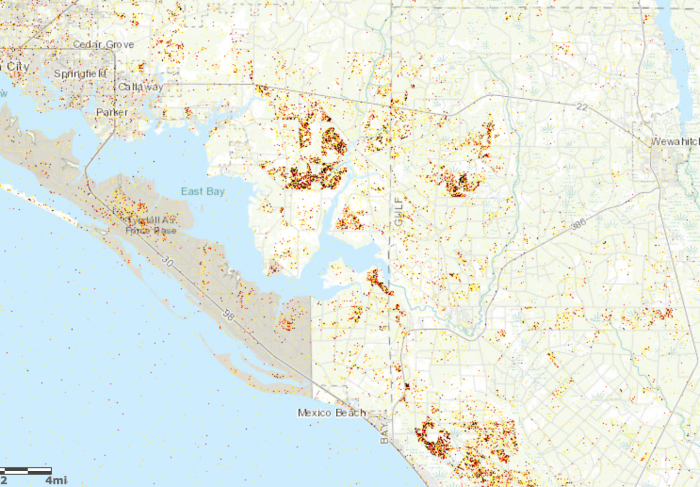The Advanced Rapid Imaging and Analysis (ARIA) team at NASA's Jet Propulsion Laboratory in Pasadena, California, created this Damage Proxy Map (DPM) depicting areas of Florida and Georgia that are likely damaged (shown by red and yellow pixels) as a result of Hurricane Michael. The map is derived from synthetic aperture radar (SAR) images from the Copernicus Sentinel-1 satellites, operated by the European Space Agency (ESA). The pre-event images were taken before (September 10, 2017 and September 16, 2017) and the co-event image was acquired 18 hours after the hurricane's landfall (October 11, 2018 7:41 AM local time). The map covers an area of 155 miles x 175 miles (250 km x 280 km), indicated with the big red polygon. Each pixel measures about 33 yards x 33 yards (30 m x 30 m). The color variation from yellow to red indicates increasingly more significant ground surface change. Media reports provided anecdotal preliminary validation. This damage proxy map should be used as guidance to identify damaged areas, and may be less reliable over vegetated areas and flooded areas. For example, the scattered single colored pixels over vegetated areas may be false positives, and the lack of colored pixels over vegetated areas does not necessarily mean damage has not occured.
For more information about ARIA, visit: http://aria.jpl.nasa.gov




